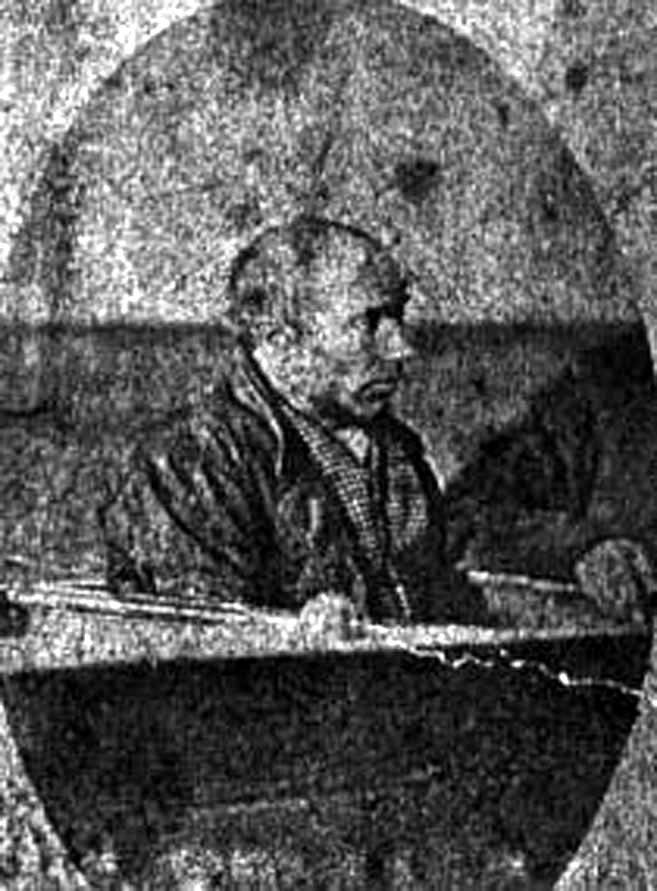Name John Kewish | Died August 1, 1872 | |
 | ||
Manx Murders - John Kewish: Last hanging on the Isle of Man (1872)
John Kewish, Jr. (died 1 August 1872) was the last person executed by the Isle of Man. He was convicted and executed for the crime of patricide.
Contents
- Manx Murders John Kewish Last hanging on the Isle of Man 1872
- Background
- Depositions
- Trials
- Post trial
- Execution
- Aftermath
- References
Background
Prior to his arrest John Kewish, Jr. lived on a farm with his elderly parents. He was the oldest of seven siblings and was unmarried. Kewish's father, John Kewish, Sr., was found dead in his home on 28 March 1872. Kewish, Jr., who had a history of crime including sheep stealing, was arrested and charged with patricide. He was described as being mentally disabled.
Depositions
According to depositions the body was found the evening of 28 March by the victim's wife, Mary Kewish, and a neighbour. The following day the family moved the body, washed it, and prepared it for burial. It wasn't until 30 March that someone decided to contact the police. On 31 March a police doctor examined the body and noted six wounds (four on the back and two on the chest) which he felt were caused by three thrusts from a small pitchfork. Additionally Thomas Kewish, John Jr.'s brother, admitted there was an ongoing argument between John and his father. The police felt this was strong enough evidence to arrest John, Jr.
Trials
Kewish was tried twice before a jury. At his first trial his only defence was that he had not committed the crime. After 14 hours of deliberation the jury was unable to reach a verdict. A new trial was ordered when the jury foreman became ill and deliberations were unable to continue. There is evidence that a majority of this first jury believed Kewish to be either innocent of the crime, or so simple minded as to not be responsible for the act. (According to one of the jurors, seven of the twelve believed he was not guilty.) At Kewish's second trial his advocates added the additional plea of not guilty by reason of insanity, submitting that either he had not committed the crime or if he had, his mental disability freed him of responsibility. Insanity was later supported by an examining physician’s statement that Kewish's mind was unable to comprehend the moral “turpitude” of such a criminal act. After an hour's deliberation the jury convicted him of patricide. The presiding deemster, William Drinkwater, sentenced Kewish to the mandatory punishment of death by hanging.
Post-trial
Although convicted, Kewish hoped to receive leniency from the British Government. The Lieutenant-Governor received several sworn statements intended to encourage leniency, including from the jurors of the first trial, his examining physician, and others. Kewish's post-trial statements were inconsistent. At one point Kewish's gaoler stated that Kewish admitted he had accidentally shot his father and hid the weapon in the thatch of an outhouse (where a bird gun was later found). At other times Kewish repeated his claims of innocence and requested a free pardon. The pitchfork had not clearly been identified; however, the Home Secretary advised the Queen that he could not recommend mercy. He felt the crime was premeditated, committed from greed, and added that neither the deemster nor the jury had recommended mercy at the trial.
Manx law at the time required the British Crown to order the execution by positive act. Queen Victoria was displeased with this, which she indicated in a letter to the Home Secretary. He apologised and promised to bring Manx law into compliance with that of England, which did not require such an order. Although expressing personal doubts about the case, she took his advice and indicated that the execution was to proceed.
Execution
Locally there was reluctance to become involved in the execution. Craftsmen initially refused to build the gallows and an executioner, William Calcraft, had to be brought over from England to carry out the sentence. Kewish was hanged in Castle Rushen at Castletown on 1 August 1872 and he is buried there. It was the only non-public execution that took place under Manx law.
Aftermath
After the execution, Queen Victoria was petitioned to put an end to the death penalty. She declined, and it wasn't until 1993 that Tynwald abolished capital punishment in the Isle of Man. Five people were sentenced to death (for murder) on the island between 1973 and 1992, but all death sentences after Kewish's were commuted to life imprisonment by the Home Secretary of the United Kingdom using the Crown's Prerogative of Mercy.
